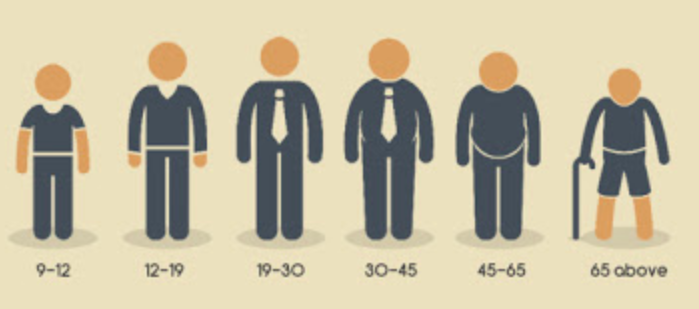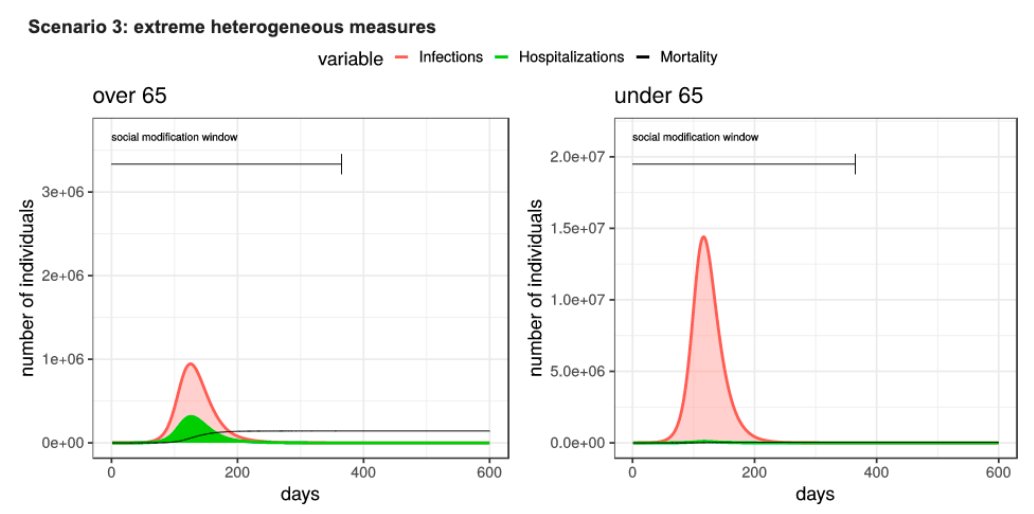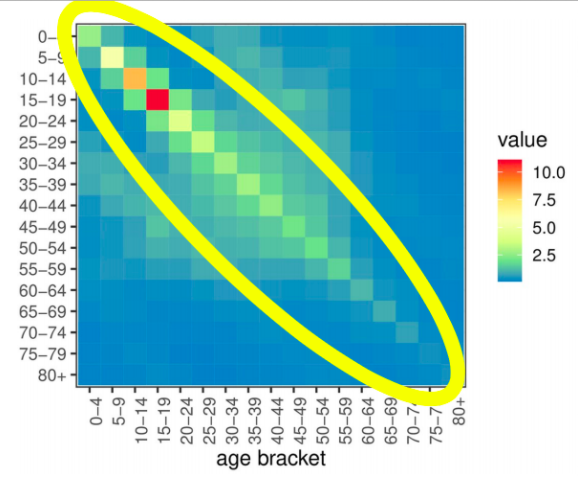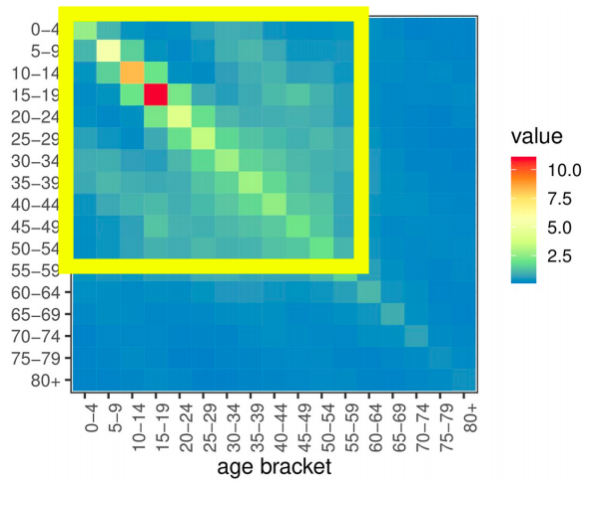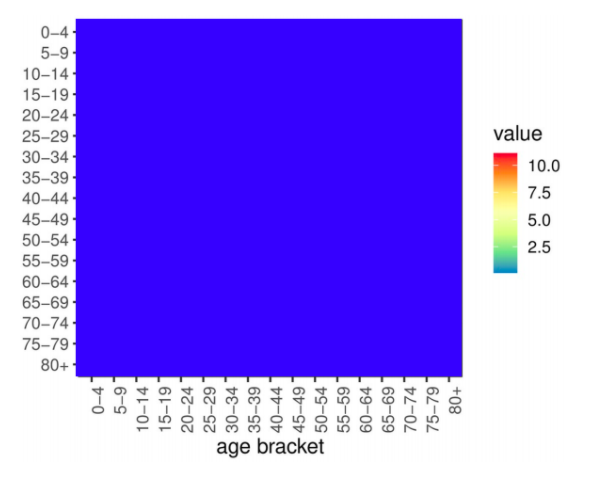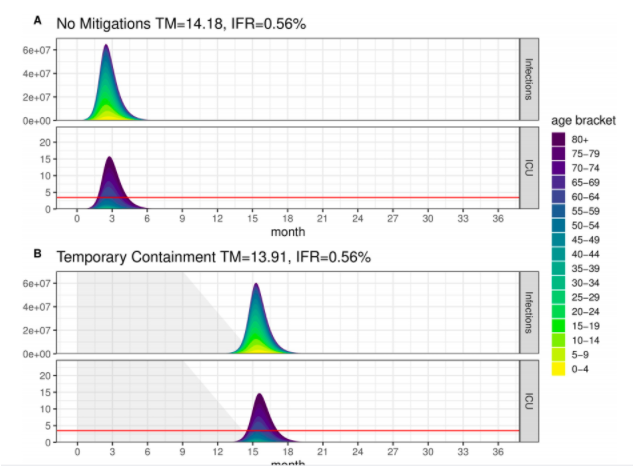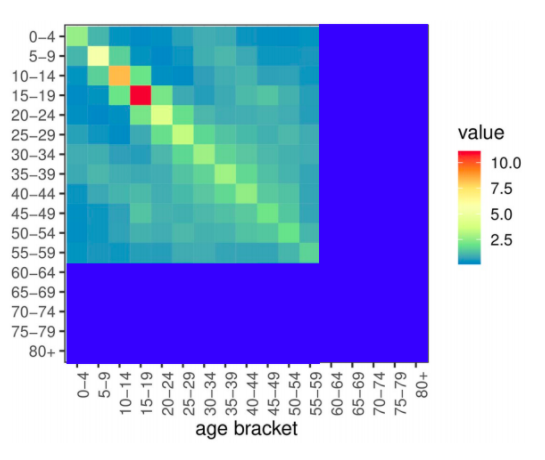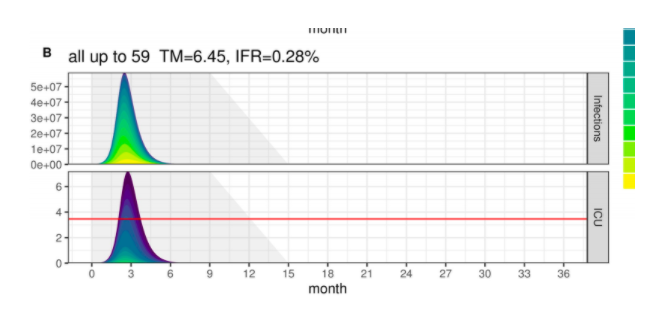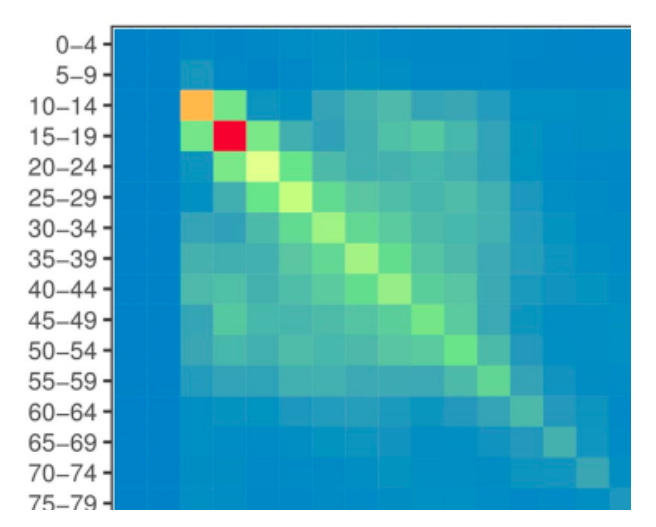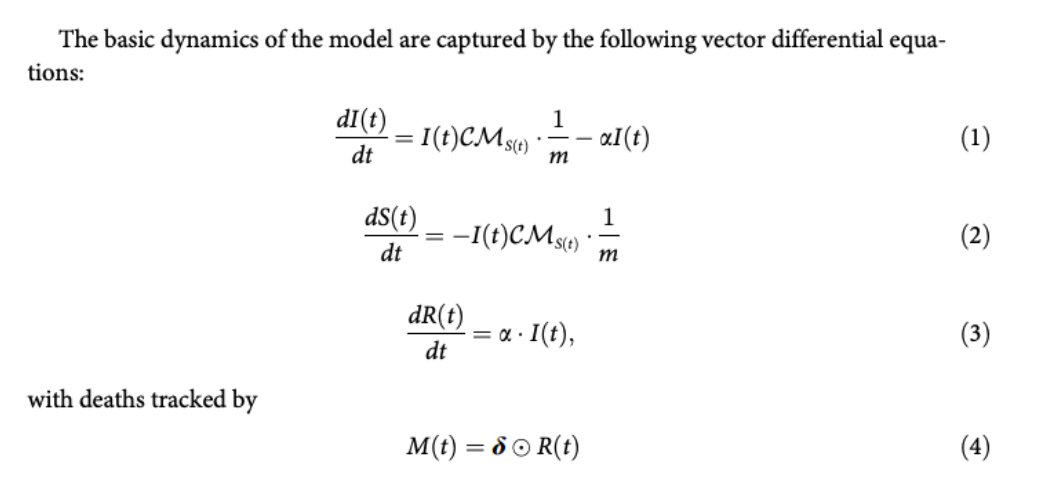1/ Age-targeted mitigations vs general mitigations. Who should isolate? On a paper by @WesPegden and @ChikinaLab.
2/ We’ve come a long way in our C19 journey, we have learned so much. We recently just learned how this pandemic affected people differently by age...we are all wiser now. If only we knew…
3/ Well, not exactly. Relatively good IFR estimates by age groups were available since March (Verity et al.) and were shouting something: the difference in IFR between ages 10 and 80 was 1000x. https://twitter.com/federicolois/status/1297025457595060226">https://twitter.com/federicol...
4/ This caught the attention of researchers and public health experts, who understood intuitively that elimination was elusive and that an age-targeted mitigation had advantages over general population mitigations. https://twitter.com/maestro_rayo/status/1299865286376554498">https://twitter.com/maestro_r...
5/ But what about the math? Can you prove that mitigations targeting specific age groups have a quantifiable advantage? This is what @wespegden and @chikinalab set out to do early on, their pre-print on the subject is from * March 16 *.
http://www.math.cmu.edu/~wes/covid.html ">https://www.math.cmu.edu/~wes/covi...
http://www.math.cmu.edu/~wes/covid.html ">https://www.math.cmu.edu/~wes/covi...
6/ They showed that hard homogeneous mitigations (lockdown) for both < and > 65 would delay a "do nothing" scenario. However, because of the asymmetry of impact between groups, extremely heterogeneous measures result in about half the deaths.
7/ This might be convincing enough but they went further. They realized that not only IFR is asymmetric: people tend to socialize in a non uniform way across age groups. This can be visualized by a "contact matrix", this for instance computed for the US.
https://journals.plos.org/plosone/article/file?id=10.1371/journal.pone.0236237&type=printable">https://journals.plos.org/plosone/a...
https://journals.plos.org/plosone/article/file?id=10.1371/journal.pone.0236237&type=printable">https://journals.plos.org/plosone/a...
8/ So what does this fancy graph mean? A couple things. First, people tend to socialize the most with people in the same age group (diagonal) Second, younger people tend to socialize the most, especially teenagers. Shocking I now, but important for this pandemic.
9/ This is important because given these interaction patterns, once the younger population has acquired immunity (either through a vaccine or by getting infected and recovering), community immunity is reached and the epidemic cannot be sustained.
10/ Let& #39;s explore 2 mitigation strategies. First, we lockdown everybody. This is like setting the contact matrix to blue. At some point you need to restart society so you shifted essentially the curve to a later point in time.
11/ Now we try to strictly reduce contact in the older age groups, let& #39;s say all up to 59 to affect as fewer people as possible. In this scenario we don& #39;t delay the pandemic but reduce mortality by about half (as seen in the estimated IFR).
12/ Intermezzo: If you don& #39;t recognize IFR, check out this thread. https://twitter.com/maestro_rayo/status/1303340098872901632">https://twitter.com/maestro_r...
13/ The paper goes in more detail about homogeneous and heterogeneous strategies, and also on the possibility that children spread less than adults, which results in this contact matrix.
13/ So in short, the contribution of this work is to formalize the idea that an age-based strategy is your best tool to mitigate bad outcomes in this pandemic. Mathematically they do this by extending a SIR model with the contact matrix by considering compartments for age groups.
14/ This is similar to @mgomes1& #39;s idea of extending SIR to susceptibility and connectivity levels, although in that work the distribution doesn& #39;t necessarily depend on age groups but it& #39;s a non-uniform (gamma) distribution. https://twitter.com/maestro_rayo/status/1306583494433308673">https://twitter.com/maestro_r...
15/ It& #39;d be interesting to formally link/compare both approaches but I leave this to the experts :) BTW draft and paper are very well written and @wespegden has a nice thread about their work. Their code is also open-sourced in R.
https://github.com/mchikina/SIRageStratified">https://github.com/mchikina/... https://twitter.com/WesPegden/status/1288140129677332482">https://twitter.com/WesPegden...
https://github.com/mchikina/SIRageStratified">https://github.com/mchikina/... https://twitter.com/WesPegden/status/1288140129677332482">https://twitter.com/WesPegden...

 Read on Twitter
Read on Twitter